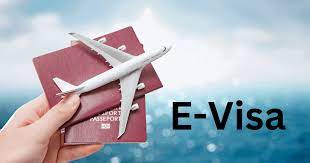
Swift Access: Navigating the India Visa Process for USA Citizens
India is a land of diverse cultures, breathtaking scenery, and captivating history and traditions. Exploring this incredible country can be a life-changing experience. However, to enter India legally, a visa is required. The good news is that India has made the process for acquiring a visa significantly more straightforward by introducing the e-visa system. In this blog, we shall take a deep dive into the India e-visa system and explore all the requirements and pointers that one needs to keep in mind while applying for one.
The first and the most critical piece of information to keep in mind is the required documents for the process. To apply for India E-visa, you need to have a valid passport for at least six months, from the date of arrival in India and at least two blank pages for the immigration stamp. You should also have a color photograph, taken against a white background and without any shadows, of at least 2×2 inches. The photograph should have a clear view of your face and eyes. Finally, you should also have your confirmed return tickets and hotel accommodation details.
The second important piece of information is the difference between the various E-visa categories. India offers multiple types of e-visas, including e-tourist visa, e-medical visa, and e-business visa. Each type of visa has different stipulations and comes with specific terms and conditions. You must check and apply for the right category of e-visa, according to your travel purpose, to avoid any inconvenience.
The third critical piece of information is regarding the application process and the timeline for the visa approval. The India e-visa application process is an entirely online procedure. The e-visa application is submitted on the official government website, and the application fee is payable online. One should note that it is imperative to apply for an e-visa at least four days before the proposed date of arrival in India. The Indian government usually grants visa approval within 72 hours of submitting the application. However, it is advisable to apply much earlier, to avoid any unforeseen delays or rejections.
The fourth important thing to keep in mind is the validity and stay duration of the e-visa. The e-visa is valid for a maximum of 60 days from the date of arrival in India and can be applied twice a year. Tourists and business travelers can stay in India for up to 90 days with e-visa, while medical tourists can extend their stay for up to six months. However, one should confirm the date of exiting India with the immigration officer during registration at the port of entry.
The fifth and final critical pointer is regarding the additional documents required for specific e-visa categories. For instance, if you are applying for a medical e-visa, you might require an additional letter from the hospital or doctor that you plan to visit in India. Similarly, for an e-business visa, you might require a letter from the company stating the purpose and time to visit. Therefore, it is essential to verify any additional documents required for your specific e-visa category.
Conclusion:
India is a treasure trove of experiences and is a must-visit destination for travelers worldwide. However, it is imperative to acquire a visa before entering the country. To avoid any inconvenience, you can opt for an india e-visa by following the pointers mentioned in this guide. With a little planning and preparation, you can start your journey seamlessly.